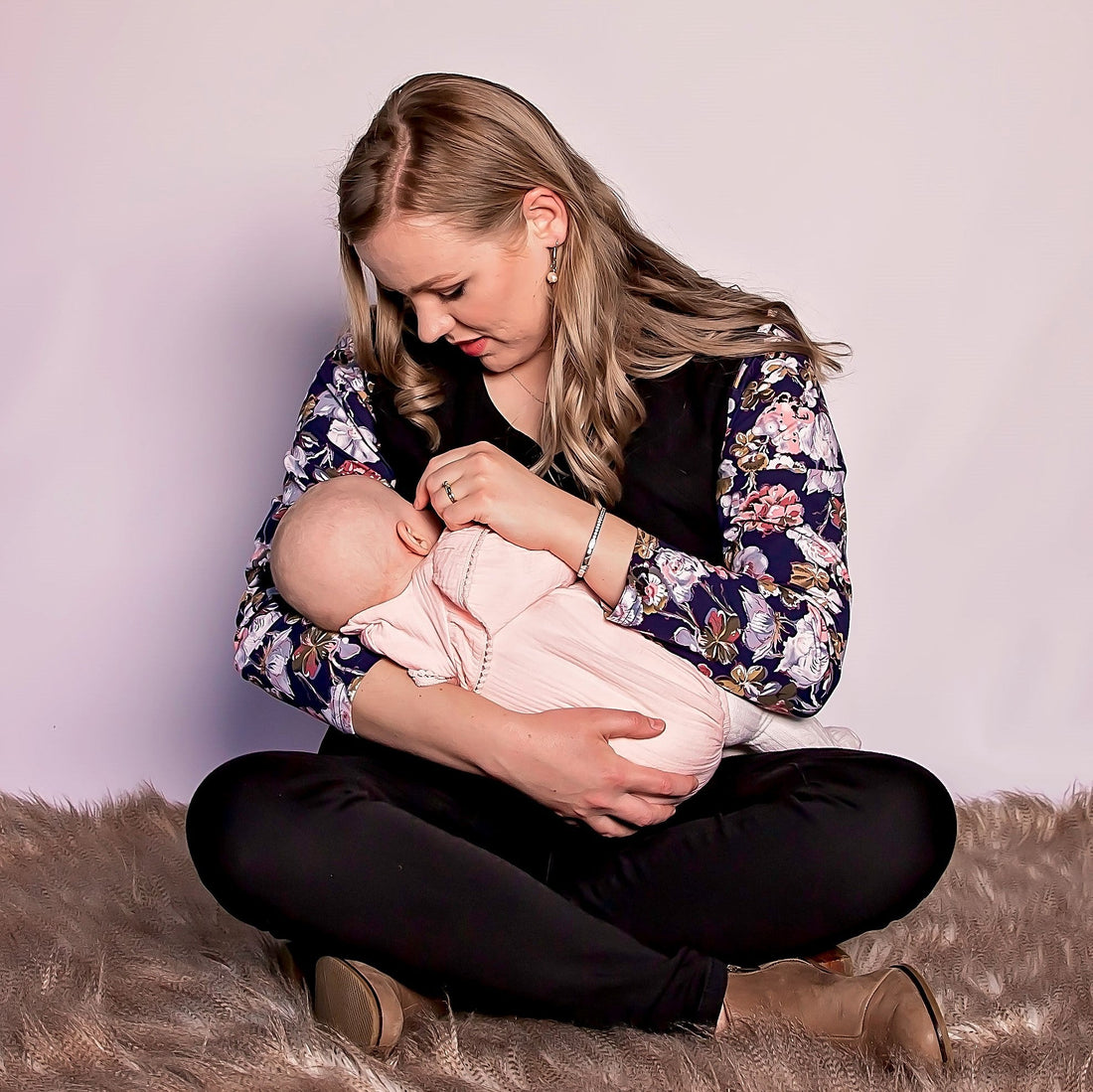We spend a lot of our time as parents caring, feeding, cuddling, walking, driving and doing just about anything to get enough sleep into our little people. The focus on naps in the first few years is so important. Our children’s night sleep is often a reflection of their day sleep and vice versa, so offering and supporting our little bubs to take good quality, restorative day sleeps is vital.
As a newborn it is very common for your baby to catnap. You day will likely be filled with lots of short 20-30min sleeps and majority of them on or near you. At some stage, usually around the 4 month mark, we ideally want to work towards your baby having three decent naps a day; each serving it’s own purpose as described below.
The Morning Nap
The morning nap is the first nap of the day and usually the one that slots into a nap routine the earliest.
You might find that this nap is done on the go as you drop older siblings to pre-school or school or head into daycare to drop your own little love off as you head to work. If you are at home it is often the nap window where you get a chance to grab a shower, hang some washing out and get organised for the morning.
If your baby has had a good overnight sleep you will find that this first nap isn’t usually that long. As a newborn (0-12wks) it will likely be around 1.5hrs long and by the time they are 7 months old it will be as short as 30minutes.
The first nap will progressively get shorter in the first 6 months but won’t drop away until some time between 15-18 months. Having a shorter morning nap will make it easier to drop it altogether when your little love hits toddlerhood and you will likely find that they will reduce the length of their morning nap themselves naturally.
So, what’s the purpose of the morning nap?
The morning nap gives your little love enough energy to sustain them through the morning and their lunch feeds. They will have some sleep debt in the morning but keeping this nap short will help to plateau the sleep debt accrued in the morning and tie them over until their lunch nap, where we want to encourage a longer consolidated sleep.
Some families will offer a longer morning nap, and that’s fine! If it’s working for you and yours then go for gold. However, having a longer morning nap can encourage early morning wake ups as the nap is essentially registered as an extension of their night sleep. It can also affect their lunchtime sleep. If they have slept for 2 hours in the morning we wouldn’t expect them to turn around and sleep for 2 hours at lunch time.
The morning nap is, in a nutshell, a little pow wow to tie your baby over until their most restorative day sleep at lunch time.
"Sleep is the best meditation" - Dalai Lama
How do you know your little one is ready to drop that first morning nap?
It is common for babies around 12 months of age to start to refuse the morning nap. This can continue to happen for a couple of weeks. Be patient! It is very common for the morning nap to return with your patience and consistency in continuing to offer it during that nap trike.
The morning nap doesn’t usually drop off completely until some time between 15-18 months of age. The tell tale sign is that they start refusing it for a couple of weeks and can actually last fine until their midday snooze. Another sign is that they are taking a long time to fall asleep for their lunch nap and/or it’s a shorter sleep.
If this is happening then it could be time to drop the morning nap and encourage a longer middle of the day sleep.

The Midday Nap
The lunch time nap is the most important day sleep for your child. It is usually the longest in duration and will be the last nap they keep for the next 2-3 years! For these reasons, and more as detailed below, it’s worth putting in the time and effort to support your little one to link their sleep cycles and have a nice long, restorative nap at this time.
Why is it so important? The lunch nap balances out the day – it offers a 2-2.5 hour restful period in the middle of the day for your child to relax, recover and replenish their energy systems. The lunch nap also reflects in their night sleep, often those children that struggle to consolidate their lunch sleep will have disrupted night time sleep and/or early starts, so lets work on the lunch sleep and get those zzzzz in overnight!
The lunch nap falls within the second naturally biological nap window; that is between 12-2:30pm. It’s a time when your child is best set up to fall asleep and stay asleep. Their serotonin levels (awake hormone) are dipping, their body temperature is dropping and they have accumulated sleep debt from the morning. These factors all influence their need to sleep!
The midday siesta is when they will ideally link 2-3 sleep cycles and have a 2-2.5 hour nap. Having these sleep cycles linked means they are getting into the deepest part of their sleep, which is the most restorative and when their brain development occurs.
So what happens during the lunch sleep?
Aside from giving us, as parents, some much needs time out to enjoy our hot coffees, do some work or potter around the house, it has the added benefits of;
-
Cell growth
-
Brain development
-
Repair and recovery of immune systems
-
Appetite regulation
-
Converting memories from short to long term
-
Emotional regulation
The lunch nap can take some time to consolidate sleep cycles and consistently have a 2-2.5 hour stretch. For this reason it is ideal to have this nap at home in your child’s bassinet or cot where you can control their sleep environment and offer assistance if need be to consolidate those sleep cycles. The other two naps can be “on the go” in the car or buggy as you rush around doing all things life admin or playing taxi for other children!
How long will your child keep this lunch nap?
Short answer, as long as you like before it starts disrupting their night sleep! The majority of children will drop their last midday snooze some time between 2.5-3 years old. You’ll know they are ready to drop it when they resist bedtime, take a long time to fall asleep or wake far to early to start the day. If this happens it’s a good sign that their day sleep is now robbing their night sleep so it’s worth cutting it back to as short as 10-15 minutes before dropping it completely. Their (and yours!) night sleep is the most important so we want to protect that above any other sleep.
The Third Nap
The third nap is the first of the day sleeps to drop away and this usually happens sometime between 7-9 months of age. You might find that this nap is the hardest of the day sleeps to get in to your little one. It usually falls in the late afternoon between 4-5pm and is often a tricky one to consistently have in their bassinet/cots. But why?
Long story short, the third naps falls outside of your child’s biological sleep window. Essentially this means that they are tired but their little body is fighting against them telling them they don’t need to sleep. Their serotonin levels (awake hormone) is high and their melatonin levels aren’t firing which means they are tired but biologically their body is working against them.
This late afternoon nap is often a good one to have assisted; be it in the car, buggy or front carrier. In the first 6 months this nap will decrease from 60 minutes as a newborn down to 10-15 minutes around 7/8 months of age. It’s often a great time to head out for a walk in the fresh air, which in turn will aid their hormones to make the switch from serotonin to melatonin when darkness starts to fall naturally in the evening.
The Forbidden Sleep Zone
The forbidden sleep zone occurs in the early evening during the 2-3 hours lead up before bedtime (so around 4/5pm) and can be near impossible some days to support your little one to sleep. So what happens?
Our circadian rhythm (or biological sleep cycle) occurs every 24 hours as part of our internal body clock. Throughout those 24 hours we have periods of wakefulness and periods where our homeostatic drive takes a dip and we become lethargic and sleepy. These sleep cycles include periods of being asleep and awake, periods of being hungry and eating, and periods of being active and resting. They all work along side our physiological changes in our bodies, our body temperature and hormone surges.
The forbidden sleep zone is when the wakeful period of our circadian rhythm is influenced by the homeostatic drive and need for sleep. The homeostatic drive is our “need to sleep” which is influenced by periods throughout the day of feeling sleeping and being wakeful. Our need and internal “pressure” for sleep builds up throughout the day as our time awake increases. The homeostatic drive gets stronger the longer we are awake and decreases as we sleep, so we wake after a nights sleep feeling refreshed and ready for the day ahead. The process continues the next day, building throughout the day and dipping after a period of restorative sleep.
The homeostatic drive and our circadian rhythm work in opposition to one another, the circadian rhythm making us wakeful as the day unfolds and making us sleepier as we approach the evening hours. Having a good balance between these two allows us to function throughout the day and then be well rested overnight.
Towards the end of the day, usually when the third nap occurs, the wakeful part of the circadian system dominates the homeostatic drive for sleep causing the “forbidden sleep zone”. Every wondered why your child might be exhausted and look like they could fall asleep during their dinner only to get them into the bath and in their pyjamas and they are bouncing off the walls with energy?
As a result some parents take this to mean that their child isn’t ready for bedtime and keep them up too late. When in fact, sticking with their normal bedtime and wind down routine will help the homeostatic drive and circadian rhythms to align and for their little bodies to switch into sleep mode and head to bed for a long restorative overnight sleep.
If you need any additional information or support please feel free to contact me at amy@littledreamers.co.nz to book in a FREE 15 minute phone consultation to talk about what is happening for your baby and how we can help.

